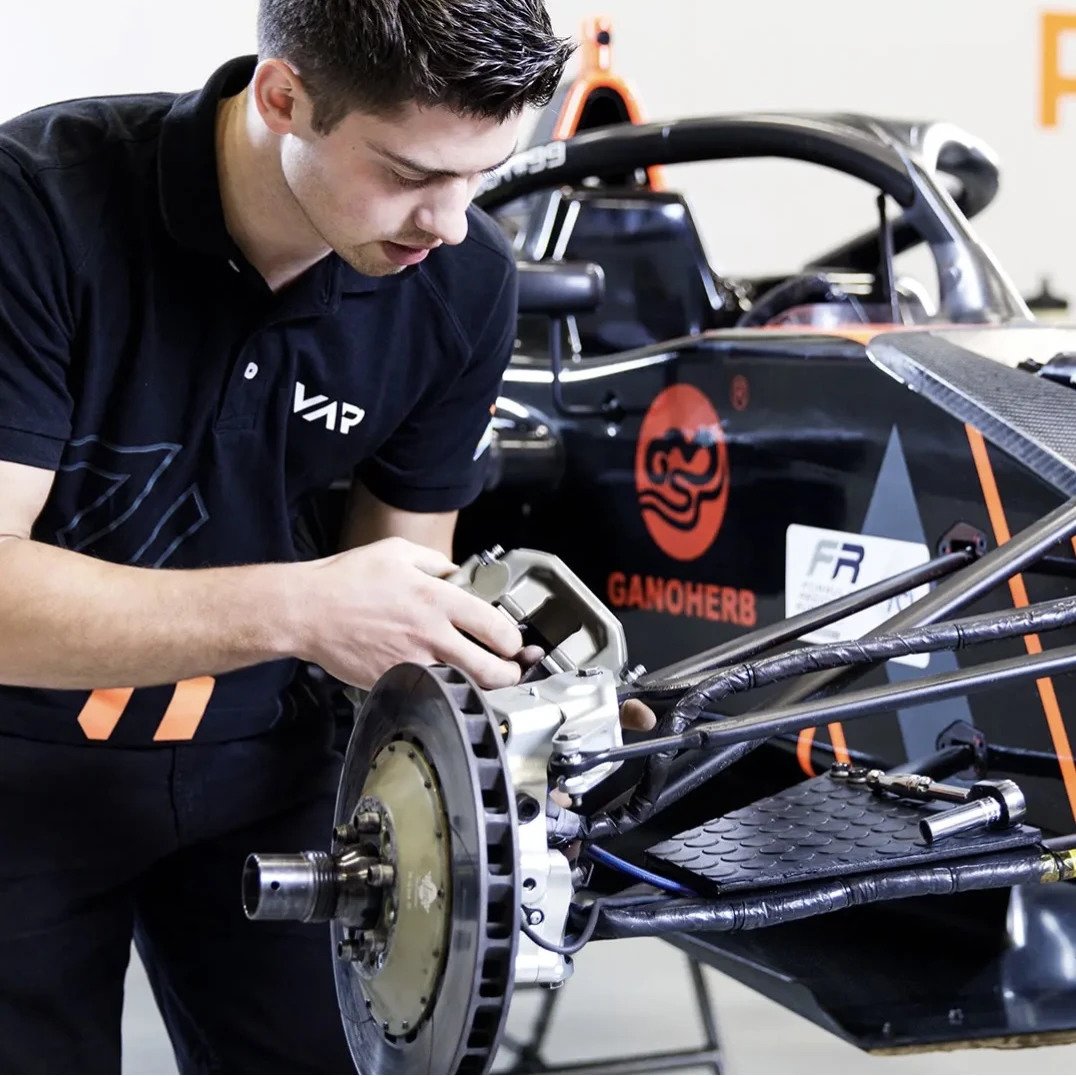Motorsport has always been the home of technological innovation. Engineers in the sport work around the clock, competing with brilliant innovators worldwide – experts from automotive, aerospace, data analysis, and many other fields – to create vehicles that are faster, stronger, and more resilient. Van Amersfoort Racing is no exception.
The Dutch team competes in both Formula 3 and Formula 4, where it has won many races and championships. It has also helped top talent such as Charles Leclerc and Max Verstappen prepare for Formula 1. But its success hasn’t stopped Van Amersfoort Racing from finding new ways to literally put them ahead of the competition. That’s why the team has begun to utilize 3D printing.
At the starting line
Last year, in preparing for the F3 Formula Regional, Van Amersfoort Racing made the step to using chassis supplied by renowned Italian manufacturer Tatuus, which is known for its stability and increased horsepower. All seemed well – except for a slight bump in the road.
“We received the cars just two weeks before the race weekend,” Remco Advocaat, Technical Director of Van Amersfoort Racing’s Formula 3 team, said. "The car arrived in the workshop and we had no tools – nothing. In just two weeks, we needed to prepare ourselves for the first race.”
Formula cars must be perfectly tuned before they are track-ready. It’s an exact science in which tenths of a second can make the difference between a spot on the winner’s podium and the aggravation of defeat. With only two weeks before race day, then, Van Amersfoort was in a tough position.

"This is where additive manufacturing helped us a lot,” Remco said. “We could manufacture tools in just two days. And that's something we never could do before with metal manufacturing.”
By developing custom tools with 3D printers, the team was able to spend every possible moment fine-tuning its vehicles. A rear-alignment tool, for example, was created to place on the taillight of a Formula 3 car. This allowed mechanics to accurately adjust the wheels of the car to ensure they were perfectly adjusted for the track.
Wire to wire
The rear-alignment tool utilized carbon rods from which a stretched wire acts as reference for the vehicle’s center point. It was extremely important, then, that these rods were accurately positioned. Because standard materials such as PLA are not strong and stiff enough, the team began to experiment with Clariant-produced carbon fiber-reinforced materials.
"We've been printing a lot with conventional materials, but with Clariant's carbon-fiber materials, the possibilities are endless,” Remco said. “We are now able to find solutions that can withstand the extreme environments we work in.”
Clariant PA6/66 20CF is a nylon material that contains 20% carbon fiber, offering the perfect properties for the job. Because the Ultimaker S5 uses an open-filament system, it had no problem printing the material using an Ultimaker CC 0.6 print core.

Clariant also provided the team with a custom-made PET-G filament. It was used for the ‘inside cushions’ of the rear-alignment tool, preventing paint from scratching when the tool was installed. The PET-G is the exact fluorescent-orange color as the decals on the Van Amersfoort Racing Formula 3 car, giving tools – such as custom sidepod air-blowers – a slick, professional look in line with the team’s aesthetic.
From spectators to champions
While the team’s engineers were creating advanced tools using the Ultimaker S5, other Van Amersfoort Racing team members began to see the possibilities of 3D printing.
"The philosophy of 3D printing has grown within the company,” Remco said. “You see it more than often that a mechanic asks for a specific 3D printed tool.”
3D printing has enabled the team to approach challenges and create solutions in ways that were previously much more challenging to accomplish. Mechanics working on cars’ front brakes, for instance, created a simple toolholder that can be placed on the suspension of the car. Now, when performing maintenance, every tool or part needed for a vehicle’s assembly is always in direct sight and within reach.

The technology was also applied to Van Amersfoort Racing’s realistic in-house racing simulators. These simulators offer drivers the opportunity to familiarize themselves with tracks and cars – as well as time to get used to the halo, a driver-safety system that consists of a curved bar surrounding the car’s cockpit, protecting the driver’s head. While the halo drastically reduces the chance of injury to drivers, it also influences their views of the road.
An actual halo costs approximately €4,000 and is difficult to reproduce using traditional manufacturing. Using a 3D printer, Van Amersfoort Racing created one in four relatively simple prints, then glued them together and wrapped them in carbon-fiber sheets. The result was a halo strong enough for the simulators, which are now able to show drivers realistic views of the track.
The road ahead
The tools, jigs, and fixtures Van Amersfoort Racing’s engineers have created with 3D printers have made processes more efficient and life in the garage and pit easier. The team continues to discover new applications on an almost daily basis, using 3D printing and other technologies to push racing innovation to its limits.
“Due to the significant size of our F3 and F4 car fleet, the amount of 3D printed applications is enormous,” Remco said. “I can imagine that large companies such as car manufacturers can produce many tools with 3D printing.”

